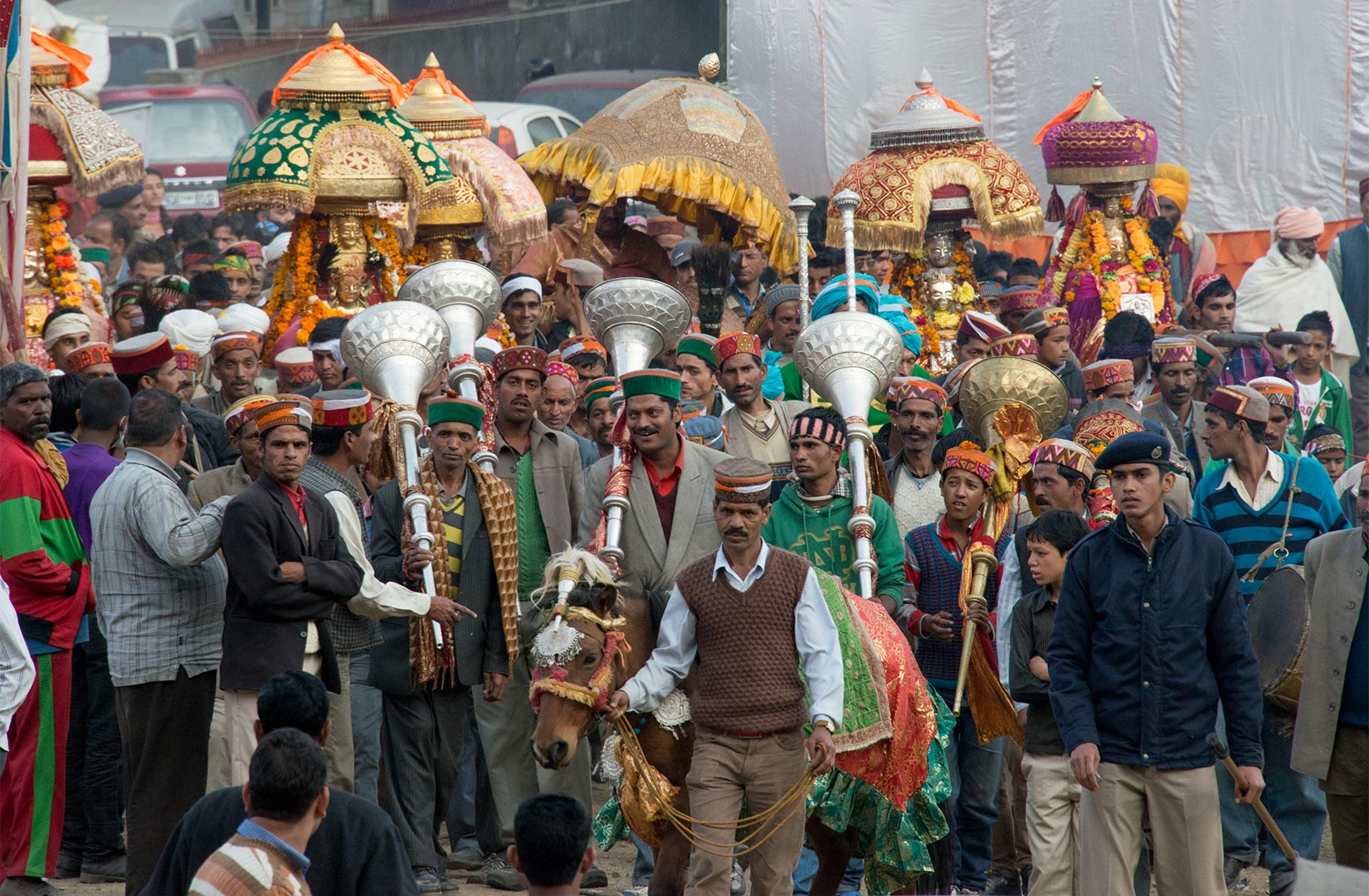Dance of Honour
It is the fourth day of the festival of Dusshera when I bump into a crowd clustered together in front of the king’s tent. It is the drums I hear first, then the horns; the scene is enhanced by a colourful array of light shining on the crowd; it is an absolute revelry of sights and sounds. Villagers, who come from three places of Inner Seraj (associated with three devtas), call out for the king to appear amongst them and their devtas. (I have bumped into this scene, with the devtas of Outer Seraj, on other occasions, and each time it is unique and delightful.) Three devtas are sitting with their pujaris and gurs inside the king’s tent, while musicians and villagers gather in front of the tent to play music and dance in the custom of these hills. The music is unusual, tribal; the rhythm is different, maybe a little offbeat.
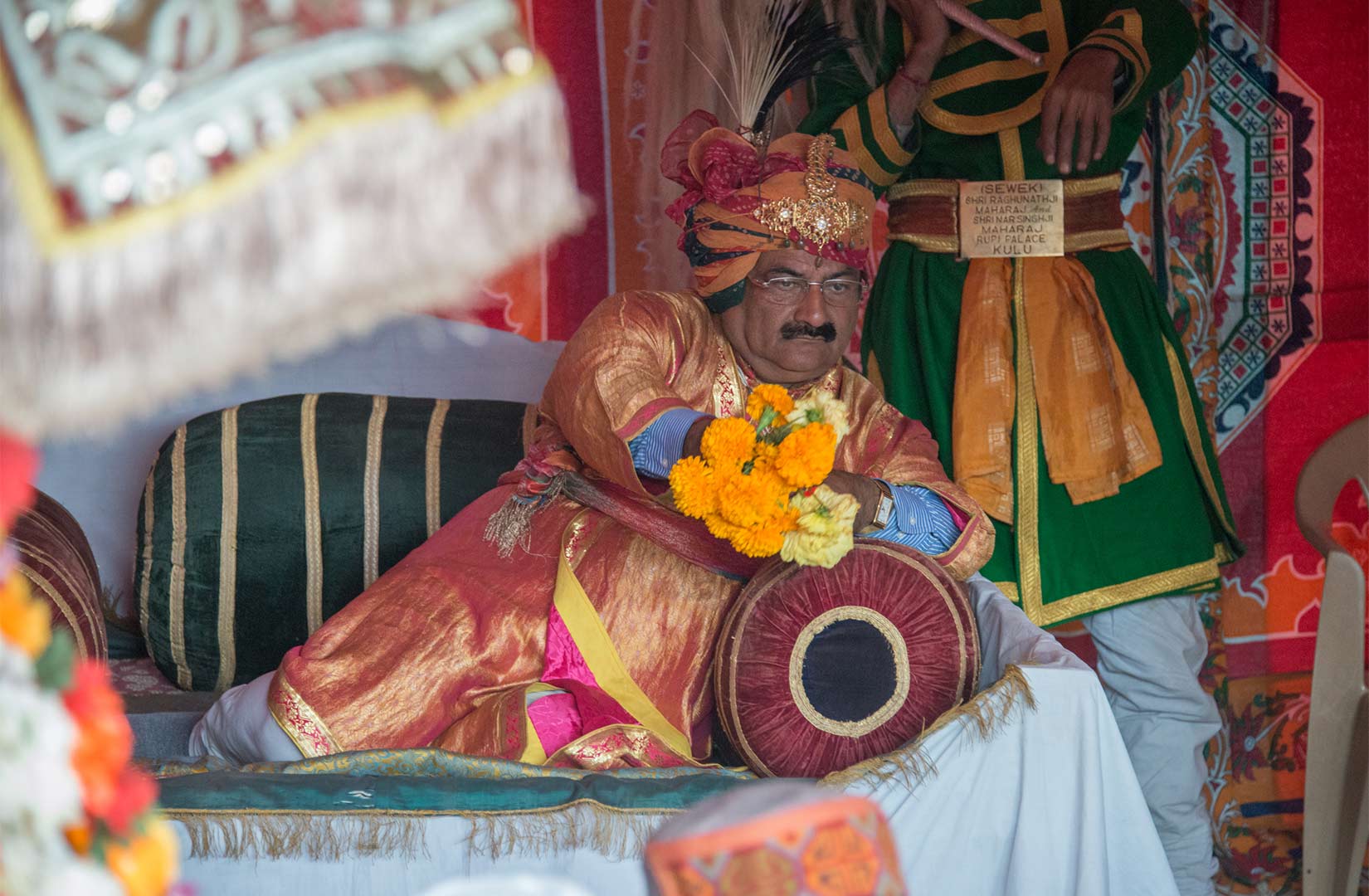
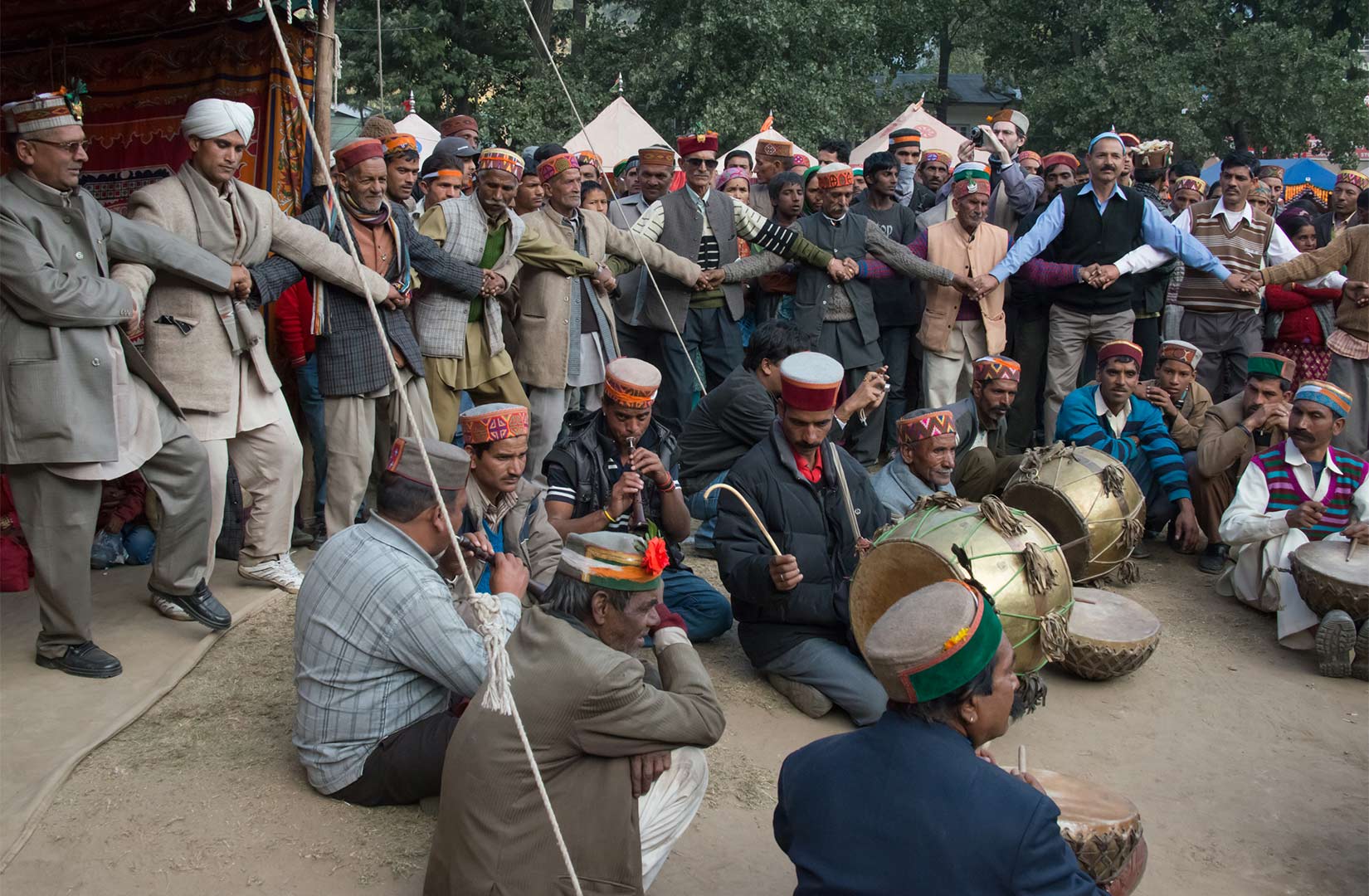
The musicians have convened at the centre of a circular area a bit ahead of the king’s tent. Some are drunk, others are intoxicated, I am sure, by other substances. The air is filled with anticipation. Mountain men have their arms on each other’s shoulders, form a semicircle around the drummers, and begin to dance.
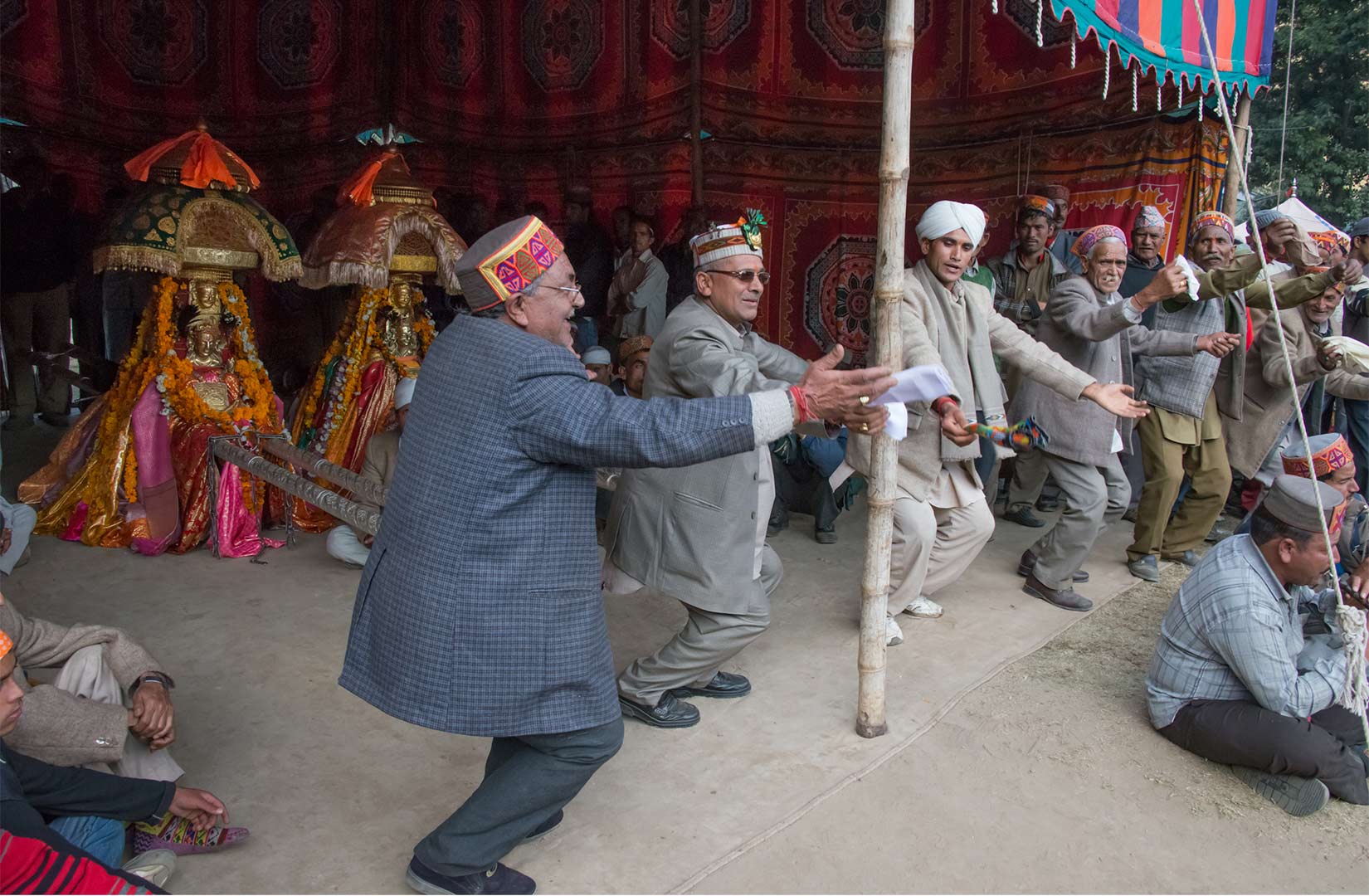
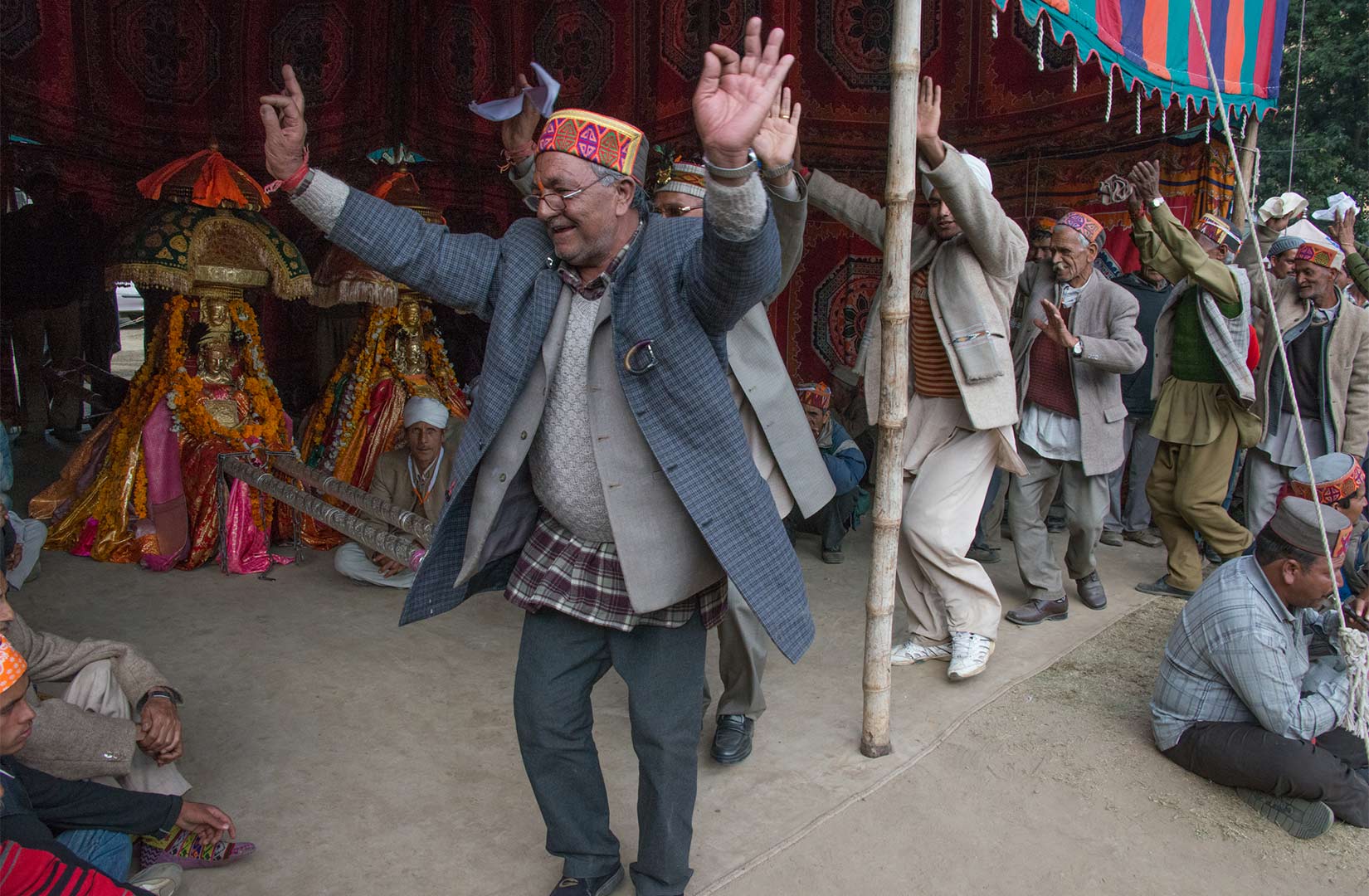
The dance is deliberate, calm, joyous, and all the men seem to know the steps. Folk dances from the hills always incorporate a handkerchief, and this is no exception. They twirl their handkerchiefs while their feet move in unison, kicking up the dry earth. The movements convey a bodiless-ness—an expression of something more than the body and senses—perhaps leading the attention to the divine. It is rather hypnotic, intoxicating. This dance continues for some length of time, and then the king arrives at his throne to sit and watch. He leans against a cushion, rests on one hip in a relaxed posture, and enjoys the scene. I notice that this is the position he always sits in when he’s on his large, cushioned throne; perhaps this is tradition. Inside the tent, the three devtas and their attendants greet him and then refocus back on the dance. What a scene! The space is timeless; even the digital camera in my hands feels ancient.
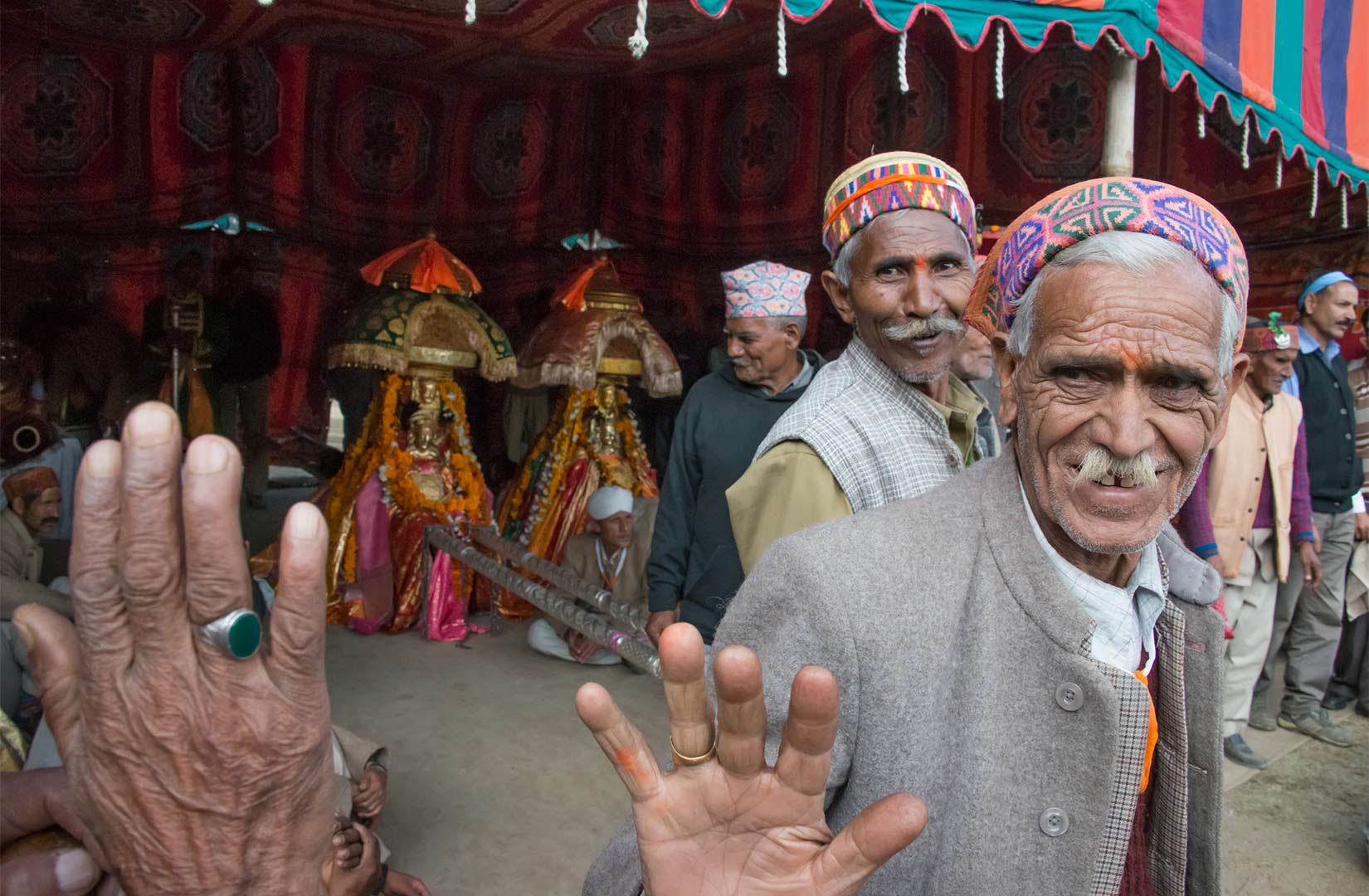
After some time, the beat of the music seems to change. It is now time to take the king on a tour of his kingdom, Jaleb is what they call it.. The days of the raj are over. Raja Maheshwar Singh is currently a politician, but for this week of Dusshera, he rules his kingdom, and his kingdom is the Dusshera fair grounds. A rather funny looking chariot is brought out and the king, in his cloth slippers, walks over to the chariot and sits in it. He is a large man, and the silver covered wooden poles are durable.
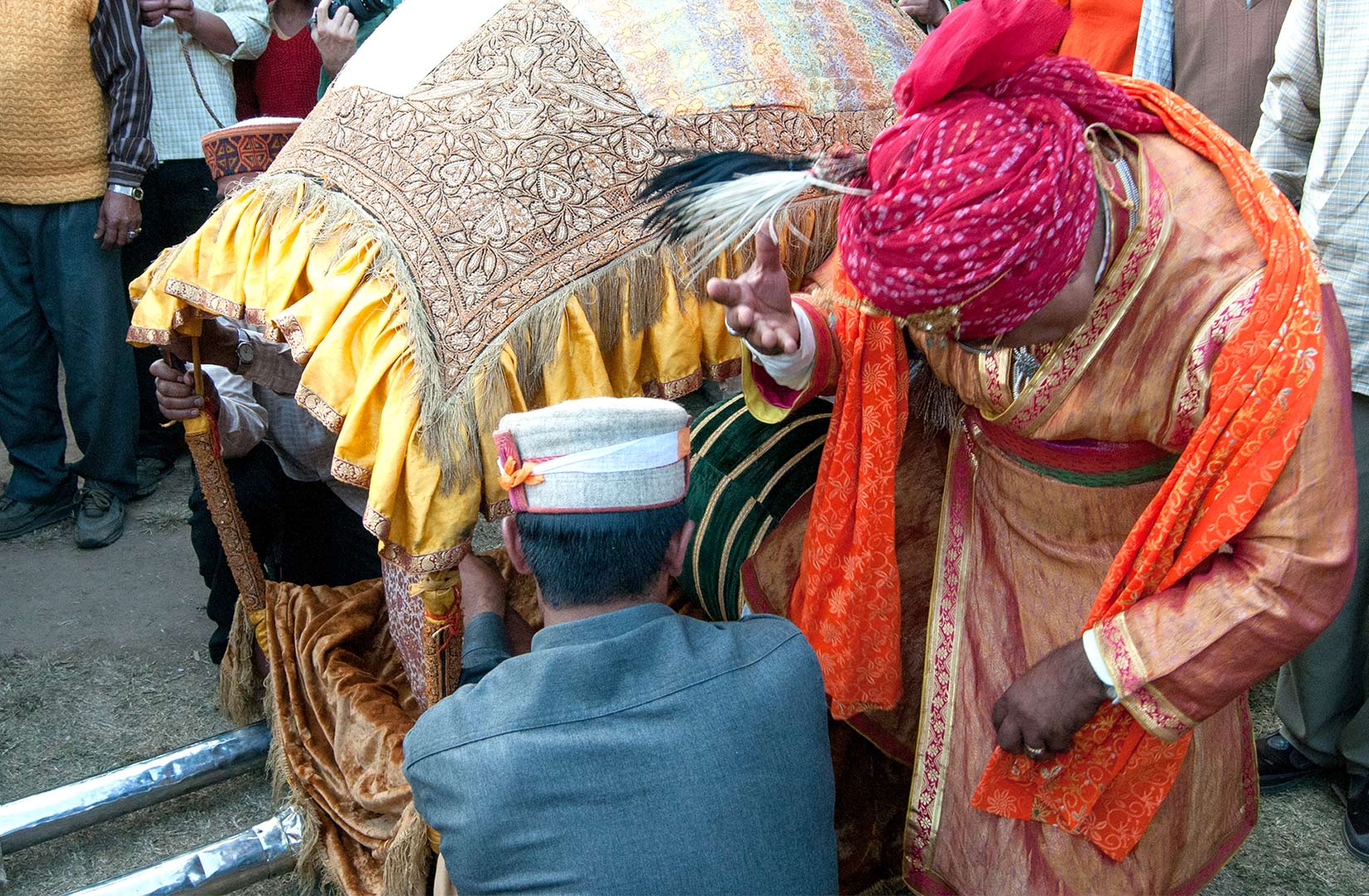
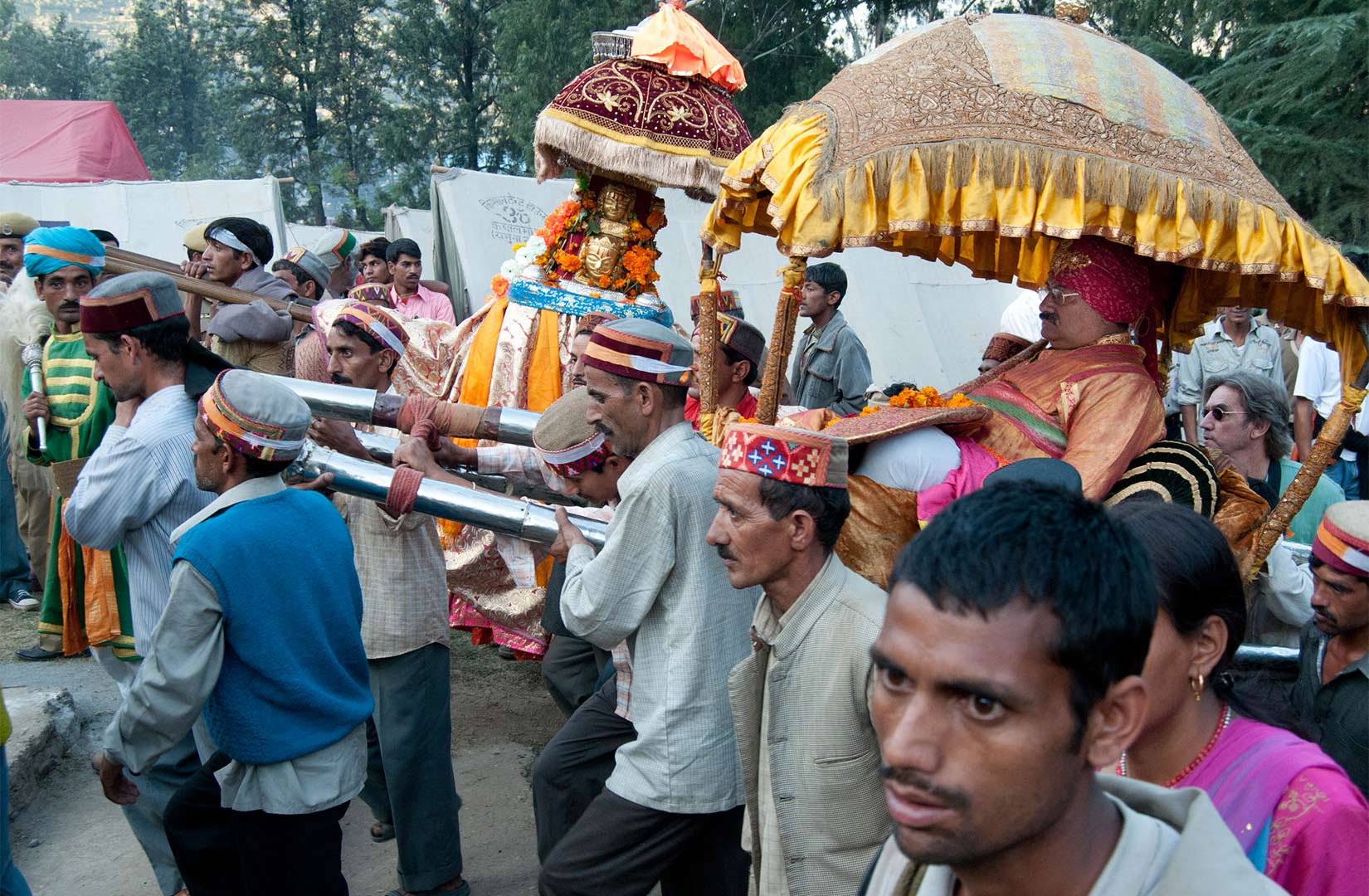
It takes many men to lift him and the paraphernalia that must accompany him on his short journey. (In 2009, I was urged to dance with a mountain woman in front of the palanquin. It was a blast. An elderly mountain man, drunk as could be, came up and planted a kiss smack on my lips, much to the king’s amusement.)
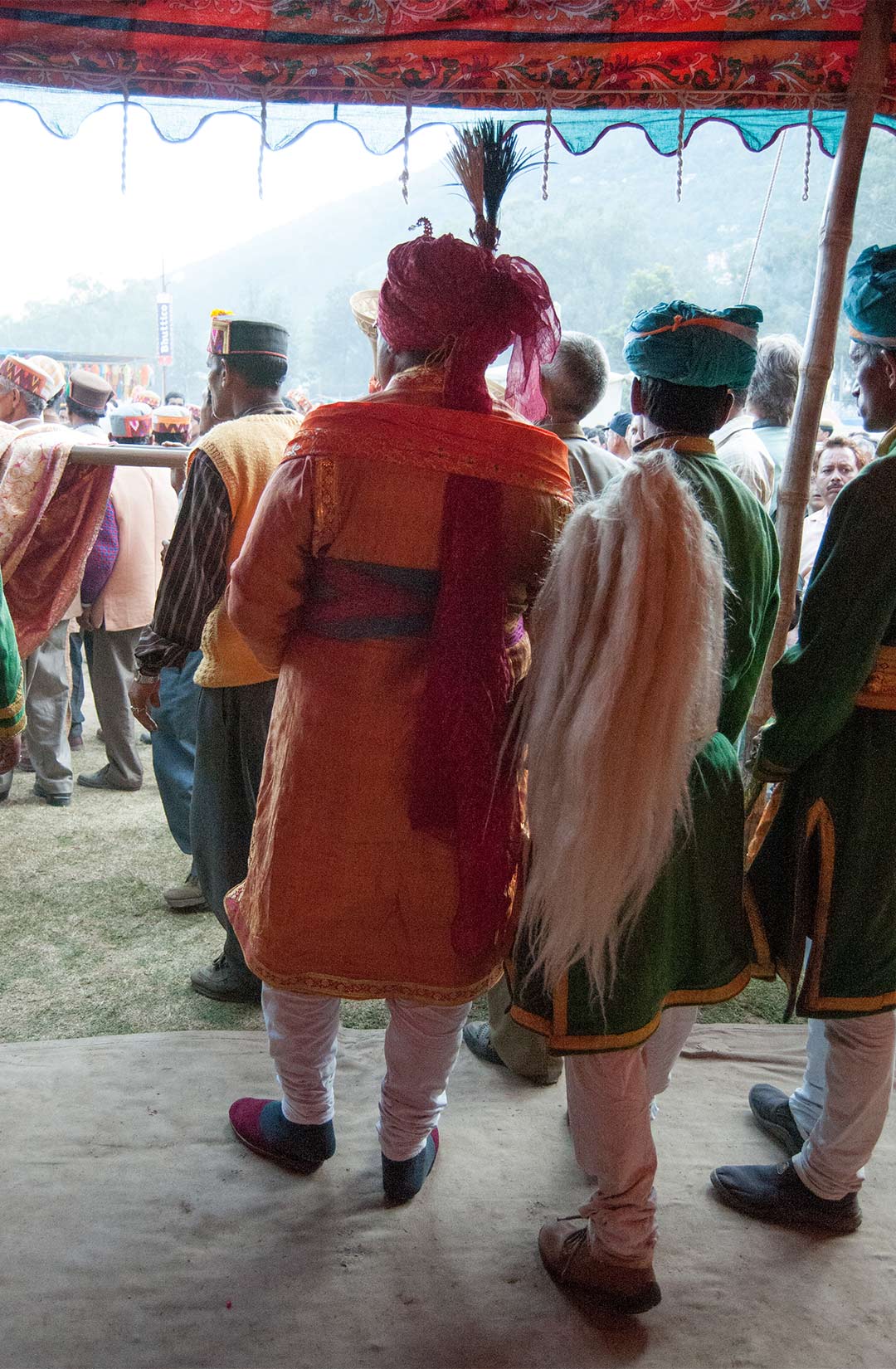
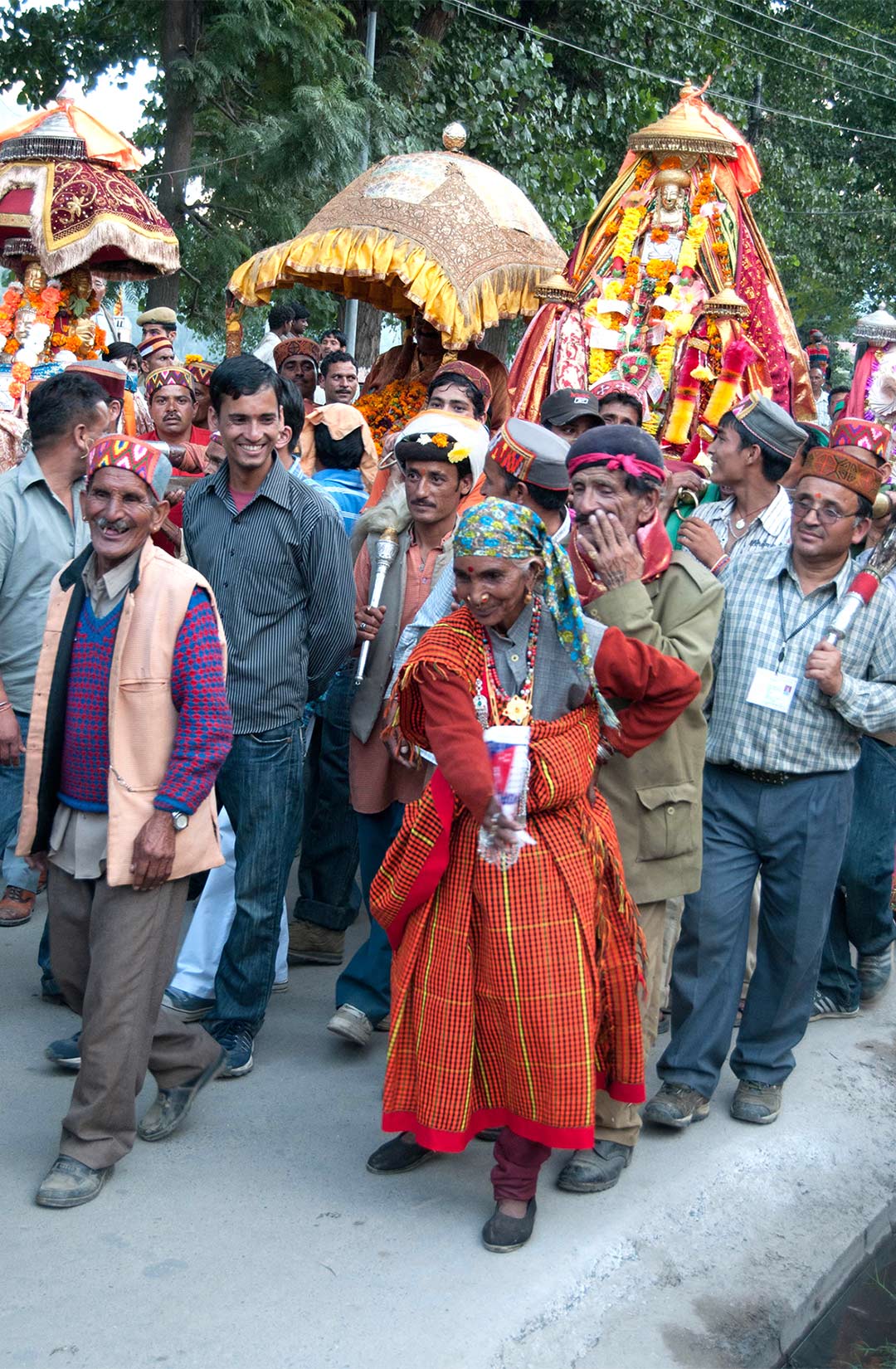
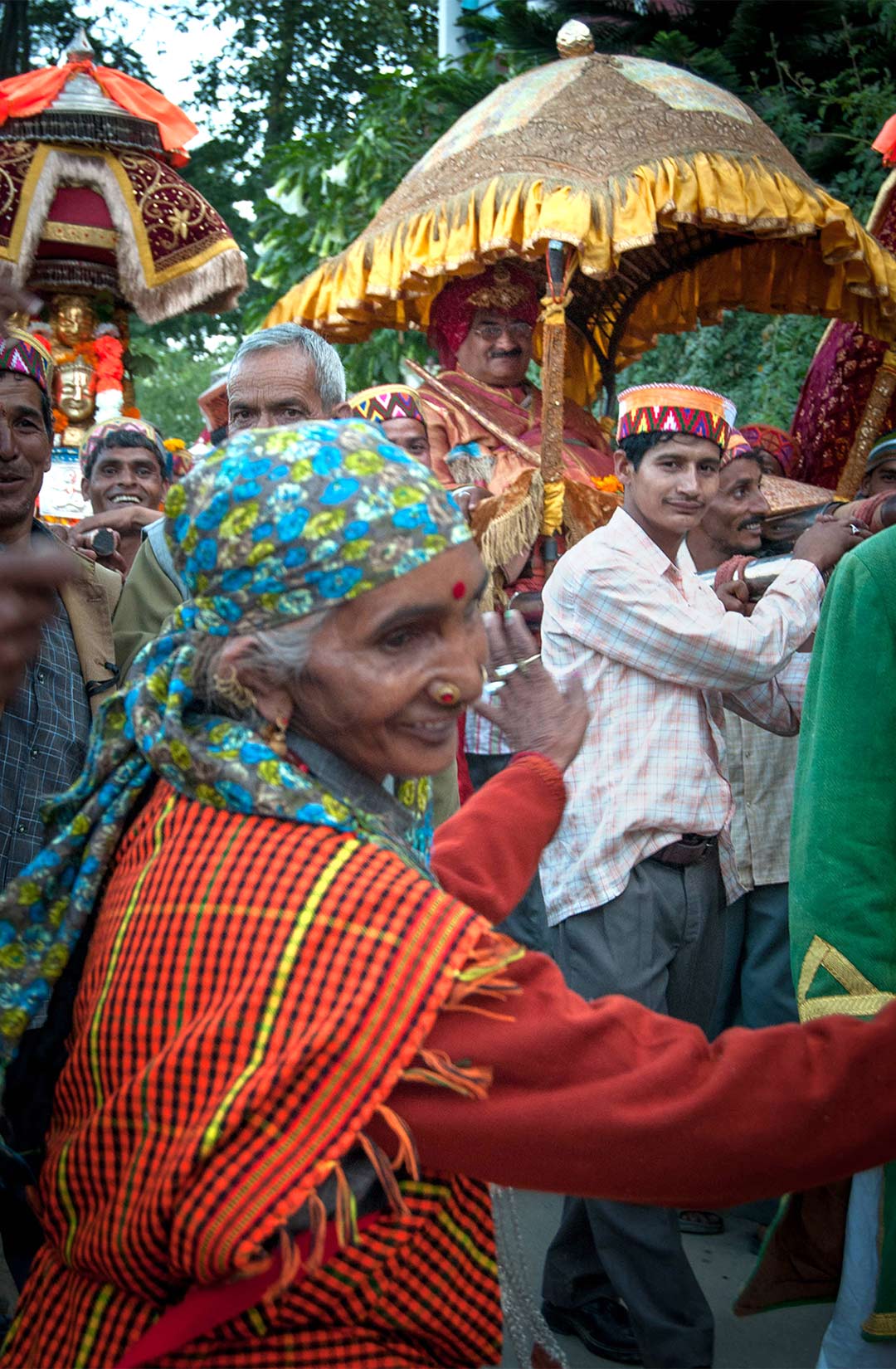
With horns blowing, drums beating furiously, and gods surrounding, as if protecting the king, the procession starts to move. I am right in the middle of it, walking backwards, filming the organized chaos. I stumble and take the camera away from my face, and, looking up, I see the king smile at me. He says hello. I can only lip read as the sounds of the music and masses of people are far too loud. Inwardly, I have to laugh. Here I am, surrounded by Shyash Nag and other devtas, hundreds of people, a band of wild, intoxicated musicians, and the unfading sense of the days of the raj!
